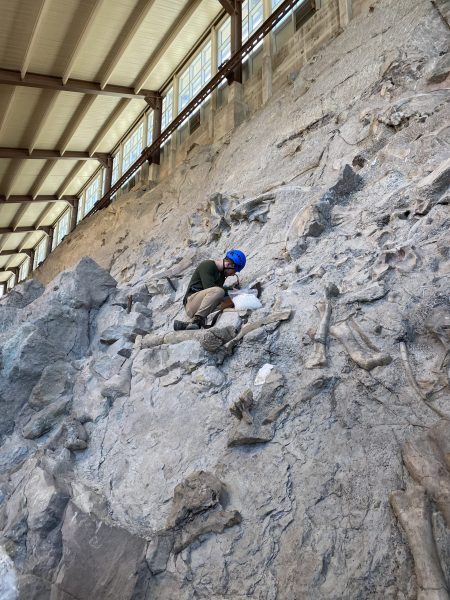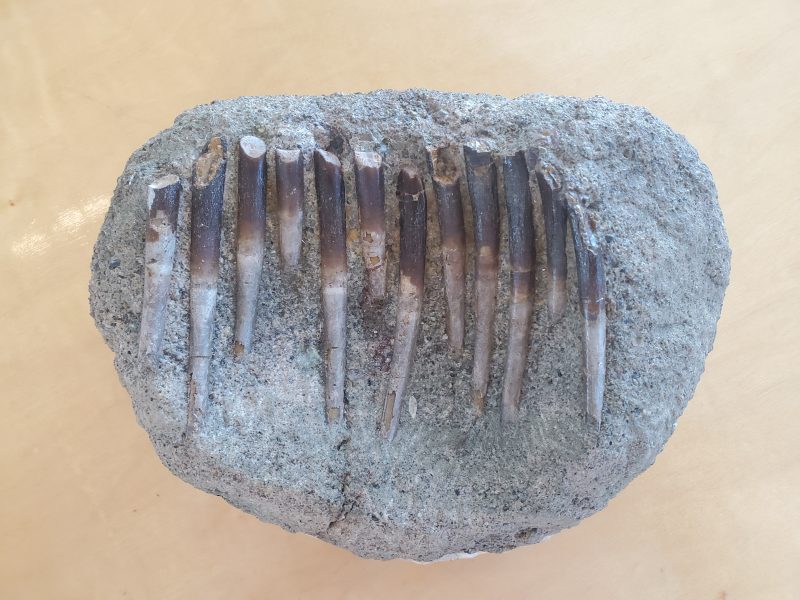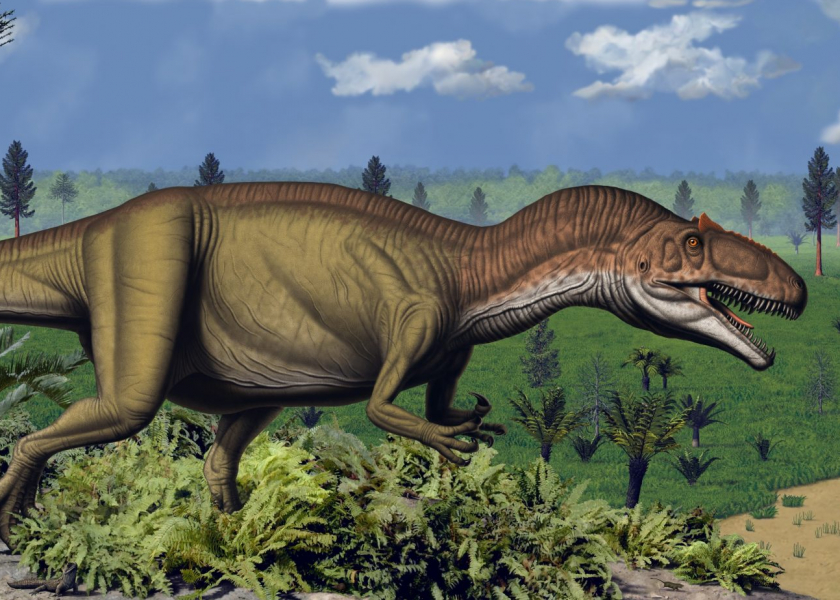July 24, 2025
You are what you eat, it turns out — even if your last meal was 150 million years ago.
While the grub itself may be long gone, a record of dinosaurs’ favorite foods has been stowed away in their ancient tooth enamel over the last eon. When researchers at The University of Texas at Austin took a close look, they discovered that some dinosaurs were discerning eaters, with different species preferring different plant parts.
Tooth enamel contains calcium isotopes that reflect the range of foods the dinosaurs ate; different types of plants have different chemical signatures, and discrete parts of trees — from buds to bark — can also have unique signatures. According to the study’s lead author Liam Norris, the results help explain how so many behemoth creatures all lived together in the same area at the same time.
“The ecosystem that I studied has been a mystery for a long time because it has these giant herbivores all coexisting,” said Norris, a recent doctoral graduate at UT’s Jackson School of Geosciences. “The idea is that they were all eating different things, and now we have found proof of that.”
The findings were published in Palaeogeography, Palaeoclimatology, Palaeoecology.

Norris inspected teeth from four dinosaur species and one crocodyliform, both herbivores and carnivores, that roamed the Western U.S. during the Late Jurassic. The plant-eaters are the long-necked Camarasaurus; the short-armed Camptosaurus; and the trunk-legged Diplodocus. The meat-eaters are the bipedal Allosaurus and the comparatively small, crocodile-like Eutretauranosuchus. The bones and teeth of these ancient creatures were all found in the Carnegie Quarry deposit in northeast Utah, which is thought to have formed during an extreme drought in as little as six months to a few thousand years.
“We were very lucky to be able to study fossils of dinosaurs that lived together and were all rapidly preserved in a single deposit,” said Rowan Martindale, an associate professor at the Jackson School’s Department of Earth and Planetary Sciences. “The Jurassic tomb preserved a unique paleontological gem and these skeletons are beautifully displayed at Dinosaur National Monument.”
Norris, who now works at the Texas Science & Natural History Museum, studied teeth from 17 individual animals across these five species. The specimens were loaned by the Utah Field House of Natural History State Park Museum or accessed in the field at Dinosaur National Monument. He shaved off a dusting of their enamel, which he took back to the Jackson School for calcium isotope analysis. Jackson School Professor John Lassiter and Radiogenic Isotope Laboratory Manager Aaron Satkoski, both co-authors on the paper, helped to analyze and interpret these data.
Previously, scientists believed that large herbivorous dinosaurs coexisted by munching on different levels of the tree canopy according to height. However, Norris’s research shows that plant height wasn’t the only factor driving the differentiation of their diets — instead, it was specific plant parts.
For example, Norris found that the Camptosaurus was a rather discerning eater, preferring softer, more nutritious plant parts such as leaves and buds. The Camarasaurus ate mostly conifers, with a preference for woody plant tissues. The Diplodocus ate more of a mixed diet that included soft ferns and horsetail plants lower to the ground, as well as tougher plant parts.
“This differentiation in diet makes sense with what we see from the morphology of these animals: the different height, the different snout shape. Then, we bring in this geochemical data, which is a very concrete piece of evidence to add to that pot,” Norris said.
This research also provides interesting food for thought to a theory about long-necked dinosaurs having flexible necks that could be used to reach many areas of vegetation without having to expend the energy to move the rest of their body. This research, which shows that the dinosaurs ate from different levels of the tree canopy, furthers that line of thinking.
The carnivores in the study — the Allosaurus and Eutretauranosuchus — had an overlap in calcium isotope values, which could mean that they ate some of the same things. However, the results also showed that the Eutretauranosuchus is more likely to have eaten fish, while the Allosaurus primarily ate herbivorous dinosaurs — possibly including the three other dinosaur species mentioned in this study.
For this ancient ecosystem to have supported so many enormous dinosaurs with such specific dietary proclivities helps to paint a picture of the vegetation and plant productivity of the time.
“It’s really just more proof that this ecosystem was as spectacular as we thought it was,” Norris said.
Henry Fricke of Colorado College also co-authored the study.

